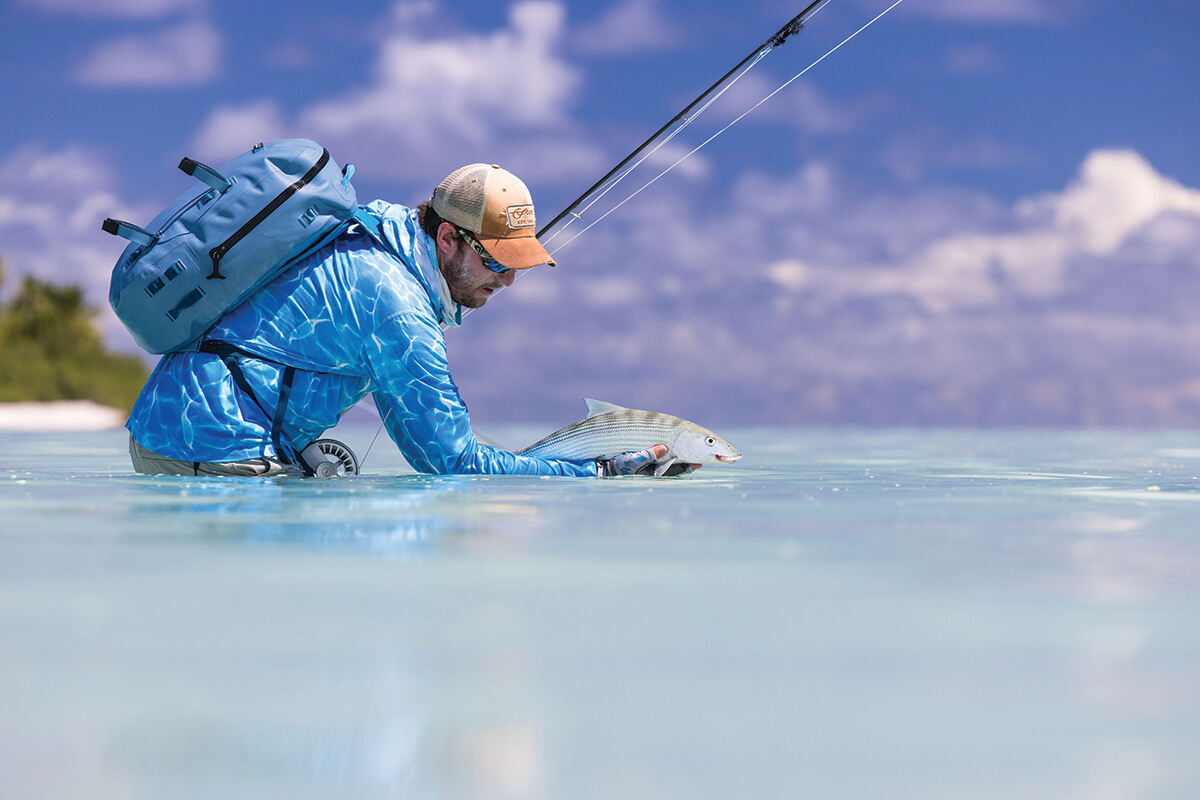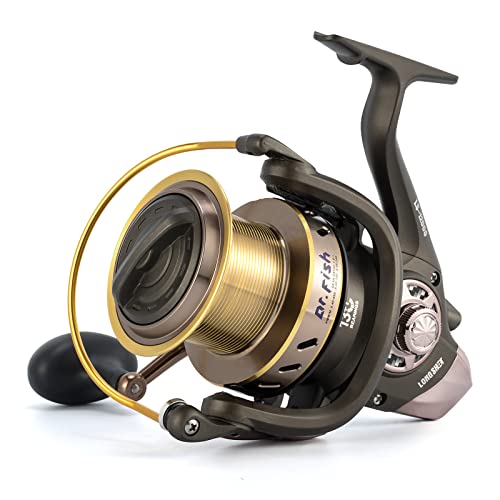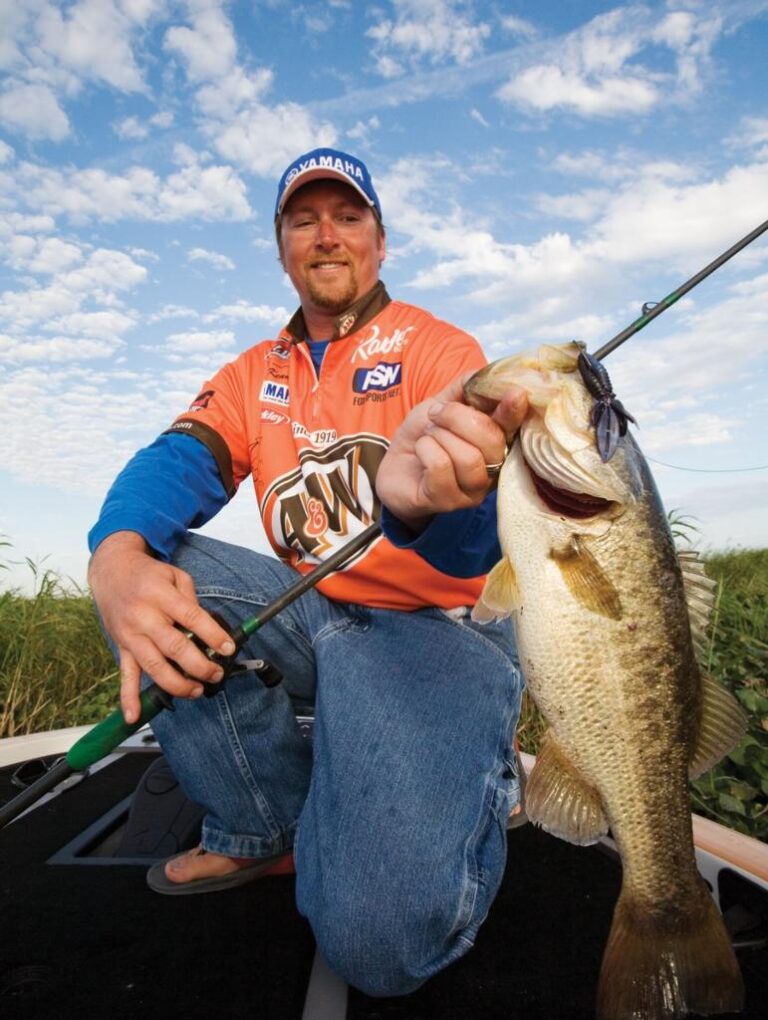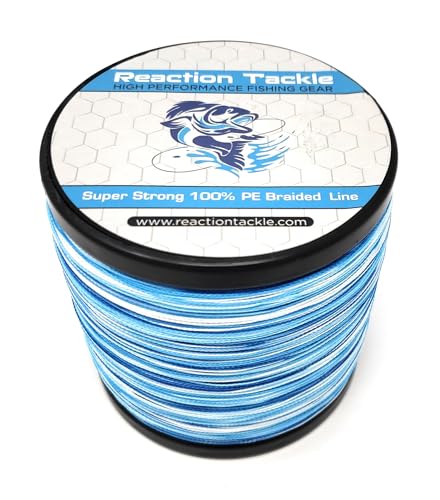Fly fishing gear is essential for a successful fishing experience. It includes rods, reels, lines, leaders, and flies.
Additionally, waders, boots, and accessories like tippet, forceps, and nippers are also must-haves. With the right gear, you can fully enjoy this popular angling technique. So, let’s dive into the world of fly fishing gear and explore what you need to get started.
Whether you’re a seasoned angler or a beginner, having the right equipment is crucial for your success on the water. From rods and reels to flies and accessories, there are several key items that every fly fisherman should have in their arsenal. With the right gear in hand, you’ll be able to cast with precision and accuracy, making your fishing experience truly memorable. Let’s take a closer look at the must-have fly fishing gear to ensure you’re prepared for a great day on the water.

Credit: www.flyfisherman.com
1. Choosing The Right Fly Fishing Rod And Reel
Factors To Consider When Selecting A Fly Fishing Rod
When it comes to choosing the right fly fishing rod, there are a few key factors to consider. These factors will help you find a rod that suits your fishing style and preferences. Here are some important things to keep in mind:
- Length: The length of the rod plays a crucial role in determining casting distance and accuracy. Longer rods are better suited for open water fishing, while shorter rods are ideal for fishing in tight spaces like streams and rivers.
- Action: The action of a rod refers to its flexibility and the speed at which it returns to its original position after being bent. Fast-action rods are more sensitive and suitable for long-distance casting, while slow-action rods provide better control for short-distance and delicate presentations.
- Weight: Rod weight is designated by a number ranging from 1 to 14. Lighter weight rods are suitable for smaller fish species and delicate presentations, while heavier rods are better for larger fish and casting heavier flies.
- Material: Fly fishing rods are typically made of fiberglass, graphite, or a combination of both. Fiberglass rods offer more flexibility and are great for beginners, while graphite rods are lightweight and provide better sensitivity and accuracy.
How To Choose The Appropriate Fly Reel
Selecting the right fly reel is just as important as choosing the rod. Here are a few things to consider when choosing a fly reel:
- Size: The size of the fly reel should correspond to the weight of the rod you’re using. Match the reel size with your rod weight to ensure proper balance and performance.
- Arbor type: Fly reels come in three arbor types – large arbor, mid arbor, and standard arbor. Large arbor reels offer faster line retrieval and reduce line memory, making them ideal for fighting larger fish. Standard arbor reels are more traditional and suitable for general fly fishing applications.
- Drag system: The drag system is crucial for controlling the line when a fish is hooked. There are two types of drag systems – click-and-pawl and disc drag. Click-and-pawl drags are simpler and suitable for lighter fishing, while disc drag systems are more powerful and provide smoother control for battling larger fish.
- Construction: Reels can be made of different materials such as aluminum or composite. Aluminum reels are sturdy and durable, while composite reels are lightweight and more affordable.
Matching Rod And Reel Weight For Different Fishing Scenarios
Matching the weight of your fly rod and reel to different fishing scenarios ensures optimal performance and enjoyable fishing experiences. Here are some recommendations:
- Lightweight (2-4 weight rod and reel): Ideal for small streams, delicate presentations, and targeting smaller fish species.
- Medium-weight (5-7 weight rod and reel): Versatile and suitable for a wide range of fishing conditions, including rivers, lakes, and larger fish.
- Heavyweight (8+ weight rod and reel): Designed for fighting larger fish species and casting heavier flies, such as when saltwater or big game fishing.
Matching the rod and reel weight to the fishing scenario ensures that you can cast comfortably and effectively, making your fly fishing experience more enjoyable.
Remember, selecting the right fly fishing gear is essential for a successful and enjoyable outing. Consider various factors when choosing your rod and reel, ensuring they match your desired fishing scenario and personal preferences. Happy fishing!
2. Essential Flies And Fly Box Organization
Overview Of Different Types Of Flies For Fly Fishing
When it comes to fly fishing gear, having the right flies is crucial. Flies are designed to mimic the insects and other creatures that fish feed on, and choosing the right fly can make all the difference in your success on the water.
Here’s an overview of the different types of flies you should have in your fly box:
- Dry flies: These flies are designed to float on the water’s surface and imitate insects like mayflies and caddisflies. They are perfect for when fish are feeding on the surface and can make for some exciting topwater action.
- Nymphs: Nymphs imitate the immature form of insects that live underwater. They are usually fished below the surface and can be extremely effective, especially when fish are not actively rising.
- Streamers: Streamers are larger, more bulky flies that imitate baitfish or other small creatures like leeches. They are typically fished with a stripping retrieve and can attract aggressive predatory fish.
- Wet flies: Wet flies are designed to be fished below the surface and can imitate a variety of aquatic insects. They are often fished across the current or swung in front of fish to entice a strike.
Must-Have Flies For Different Fish Species
Different species of fish have different feeding habits and preferences, so it’s important to have the right flies for the specific fish you are targeting. Here are some must-have flies for popular fish species:
- Trout: For trout, it’s essential to have a variety of dry flies, nymphs, and streamers in your fly box. Some must-have trout flies include adams dry fly, pheasant tail nymph, and woolly bugger streamer.
- Bass: When targeting bass, having a selection of streamers and topwater flies is key. Effective bass flies include clouser minnow streamer and popper topwater fly.
- Salmon: Salmon are known for their strong fighting abilities, and having the right flies can increase your chances of hooking one. Flies like green butt skunk and egg-sucking leech are proven salmon catchers.
- Steelhead: Steelhead are sea-run rainbow trout and can be found in both freshwater and saltwater. Popular steelhead flies include glo bug egg pattern and intruder streamer.
Effective Techniques For Organizing The Fly Box
Organizing your fly box is crucial for efficient fly fishing. Here are some effective techniques to keep your flies organized and easily accessible:
- Categorize by type: Arrange your flies by type, such as dry flies, nymphs, streamers, and wet flies. This makes it easier to find the specific fly you need when on the water.
- Group by size and color: Within each category, organize your flies by size and color. This allows you to quickly select the right size and color combination based on the fishing conditions.
- Use fly box inserts: Fly box inserts, such as foam or magnetic pads, can help secure your flies in place and prevent them from getting tangled. These inserts also allow for easy rearrangement of flies as needed.
- Label your fly box: Labeling your fly box with the types, sizes, and colors of flies in each section can save you time and frustration. You can use stickers or waterproof markers to create clear labels.
Organizing your fly box not only saves time but also ensures that you have the right fly at your fingertips when you need it. By following these effective techniques, you’ll be prepared for any fly fishing adventure.
Remember, having the right flies and organizing them properly can greatly improve your chances of success on the water. So make sure to stock up on the must-have flies for your target fish species and keep your fly box in order.
Now you’re ready to hit the water and enjoy the thrilling experience of fly fishing.
3. Tools And Accessories For Fly Fishing Success
Indispensable Tools For Fly Fishing
When it comes to fly fishing, having the right tools and accessories can greatly enhance your fishing experience and contribute to your overall success. Here are some indispensable tools that every fly angler should consider adding to their gear collection:
- Fly box: A fly box is essential for storing and organizing your flies. Look for one that has multiple compartments and is waterproof to keep your flies secure and protected.
- Forceps: Forceps are handy for removing flies from fish, especially for those hard-to-reach hook placements. They allow for a quick release, minimizing stress to the fish.
- Nippers: Nippers are small, compact tools used for trimming excess line, cutting tippet, and clipping off tags. Choose ones that have built-in eye cleaning needles for added convenience.
- Hemostats: Hemostats are versatile tools that can be used for various tasks such as removing hooks, crimping split shot, and securing knots. Look for ones with a locking mechanism for easier handling.
- Strike indicators: Strike indicators are essential for detecting subtle strikes when nymph fishing. They provide visual cues to anglers, indicating when a fish is biting.
Importance Of Having A Quality Landing Net
A quality landing net is often overlooked by many fly anglers, but it plays a crucial role in successful catch and release fishing. Here’s why you should invest in a good landing net:
- Fish protection: A soft mesh landing net reduces the stress on fish during landing, minimizing the risk of injury or harm. It allows for a gentle and safe capture, ensuring the fish can be released unharmed.
- Easier handling: A well-designed landing net with a comfortable handle and proper balance makes it easier to handle fish during landing. It provides better control and reduces the chances of fish escaping.
- Preserve fly line: Using a landing net instead of trying to lift a fish out of the water with your fly line helps to prevent line breakage and tangles. It protects your expensive fly line from wear and tear.
- Convenience: Having a landing net readily available saves time and effort when trying to land a fish. It allows for quick and efficient netting, ensuring you don’t miss out on a potential catch.
The Significance Of Fly Line And Leader Maintenance
Maintaining your fly line and leader is crucial for optimal fly fishing performance. Here are some key reasons why you should prioritize their maintenance:
- Better casting performance: Regularly cleaning and conditioning your fly line removes dirt, debris, and line memory, resulting in smoother casts. It allows your line to shoot through the guides effortlessly, enhancing your casting distance and accuracy.
- Improved floatation: Fly lines with a waterproof coating tend to repel water better, ensuring they float higher on the surface. Floating lines are essential for dry fly fishing, enabling better presentation and visibility.
- Prolonged lifespan: Proper care and maintenance extend the lifespan of your fly line and leader. Cleaning and conditioning prevent the build-up of dirt and grime that can cause premature wear and breakage.
- Knot strength: Regularly inspecting and replacing worn leaders and tippets ensures strong and reliable knot connections. Weakened knots increase the risk of losing fish during battles.
Remember, having the right tools and maintaining your gear are vital elements for a successful and enjoyable fly fishing experience. Investing in quality tools and accessories, as well as regularly maintaining your fly line and leader, will significantly enhance your chances of landing that prized catch.
So gear up, take care of your equipment, and head out to the water for a memorable fly fishing adventure!
Conclusion
Having the right gear is crucial for successful fly fishing. By investing in quality equipment, such as a sturdy rod, reliable reels, and durable waders, anglers can maximize their chances of landing a great catch. Additionally, having the appropriate fly lines and leaders will help achieve the desired presentation and increase the likelihood of enticing fish to bite.
Don’t forget about the importance of having a versatile selection of flies, as different situations call for different patterns. Lastly, protecting yourself from the elements with proper clothing and accessories will ensure a comfortable and enjoyable fishing experience. So, whether you’re a seasoned angler or just starting out, make sure to equip yourself with the must-have gear for fly fishing to enhance your chances of a successful and memorable time on the water.
Happy fishing!





